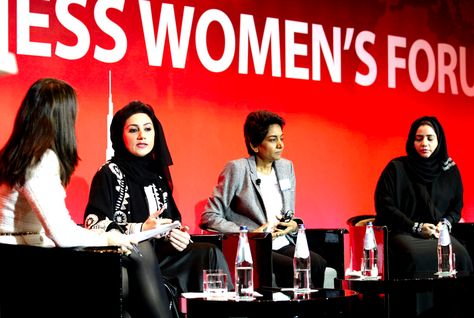Promoting Women Leaders in Different Cultures
This is one of our free-to-access content pieces. To gain access to all Ideas for Leaders content please Log In Here or if you are not already a Subscriber then Subscribe Here.

To successfully promote women to leadership positions around the globe, multinational corporation executives must adapt their strategies to each country’s cultural tightness — the degree to which a culture favors authority and rigidity, and has a low tolerance for deviance.
When it comes to promoting women into leadership positions, the same corporation will have a better experience in some countries than others. According to two researchers from University of Toronto’s Rotman School of Management, the different levels of success can be explained by what they call the cultural tightness of the country. In culturally tight countries, according to Rotman professors Soo Min Toh and Geoffrey J. Leonardelli, playing by the rules is prized and deviance is severely punished. These are the types of countries where people are arrested for jaywalking or chewing gum (e.g. Singapore), and marijuana possession might be punishable by death (e.g. Malaysia). In culturally loose countries, on the other hand, jaywalking might be frowned upon but not punished, and marijuana use might be decriminalized (e.g. Israel) and even legalized (e.g. the Netherlands).
The research by Toh and Leonardelli show a connection between cultural tightness and the success of women in gaining leadership positions. In culturally tight countries, women are less likely to be promoted and accepted as leaders. To understand why, according to Toh and Leonardelli, it’s important to understand that leaders emerge through two simultaneous processes: leader categorization and self-categorization. Leader categorization refers to what people consider as the leader prototype (from intelligent and charismatic to male); self-categorization refers to whether people see themselves as leaders. If, for example, a woman does not see herself as a prototypical leader, she might not pursue leadership roles.
This means that for women leaders to emerge, people need to view women as leader-like, and women need to view themselves as leaders and need to be willing to accept leadership roles. In culturally tight countries, however, women are not viewed as prototypical leaders; and even if women are able to gain leadership positions in tight countries, such as China and Japan, they must be careful to act ‘feminine’. As for self-categorization, women from culturally tight Germany, for example, believe they should conform to gender roles.
Because cultural tightness reinforces the traditional prototype of male leadership, women leaders are more likely to emerge in looser cultures. In the U.S. a moderately loose nation compared to China, Japan and Germany, the male leader prototype has been losing ground since the late 1970s. And men and women in culturally loose Holland exhibit similar leadership styles.
The researchers support their conclusions with extensive World Bank data covering 32 countries. In loose cultures such as Hungary, New Zealand and Ukraine, 35% or more legislators, senior officials and managers were women. In tight cultures such as South Korea or Turkey, that number was only 8%.
However, the data also showed some success for women leaders in tight cultures. The differentiating factor, according to the researchers, was what they call “gender egalitarian practices.” Gender egalitarian practices might include the same educational opportunities for boys and girls, and the same parental leave policies for men and women. Egalitarian practices, it turns out, trump leader and self-categorization. Both Malaysia and Bulgaria have a high percentage of women leaders despite generally held views that male characteristics define good leaders.
The research on tightness of cultures and the role of egalitarian practices reveal the different strategies that multinational companies can apply to increase the number of women managers in their ranks.
In tight cultures, adopt gender quotas. In tight cultures, people are used to having changes imposed on them by authorities. And authorities are more likely to reinforce cultural practices with legal sanctions; they are not great believers in voluntary compliance. For these reasons, a top-down solution such as gender quotas will be accepted and followed in tight cultures, and will thus lead to more women managers and leaders. Norway shows how this works: In 2003, Norway passed a law that required publicly traded firms to have 40% women board representation by 2007 or the corporation would be dissolved. The percentage of women in the boardroom has indeed jumped from 7% in 2003 to 40% today — the highest in the world.
In loose cultures, use examples of successful women leaders. While command-driven egalitarian practices might work in tight cultures, in loose cultures it will be changes in leader and self-categorization that will pave the way to more women in leadership positions. Visible and compelling role models are the best way to change the hurdles of male-oriented leader categorization and self-categorization. If women CEOs are shown to be successful at their jobs, a general view that men make better leaders begins to lose its credibility. The more exposure of star women leaders, the greater the reduction in beliefs that women and leadership are incompatible. Spontaneously, leader categorization and self-categorizations process will allow women to emerge as leaders.

Ideas for Leaders is a free-to-access site. If you enjoy our content and find it valuable, please consider subscribing to our Developing Leaders Quarterly publication, this presents academic, business and consultant perspectives on leadership issues in a beautifully produced, small volume delivered to your desk four times a year.

For the less than the price of a coffee a week you can read over 650 summaries of research that cost universities over $1 billion to produce.
Use our Ideas to:
Speak to us on how else you can leverage this content to benefit your organization. info@ideasforleaders.com